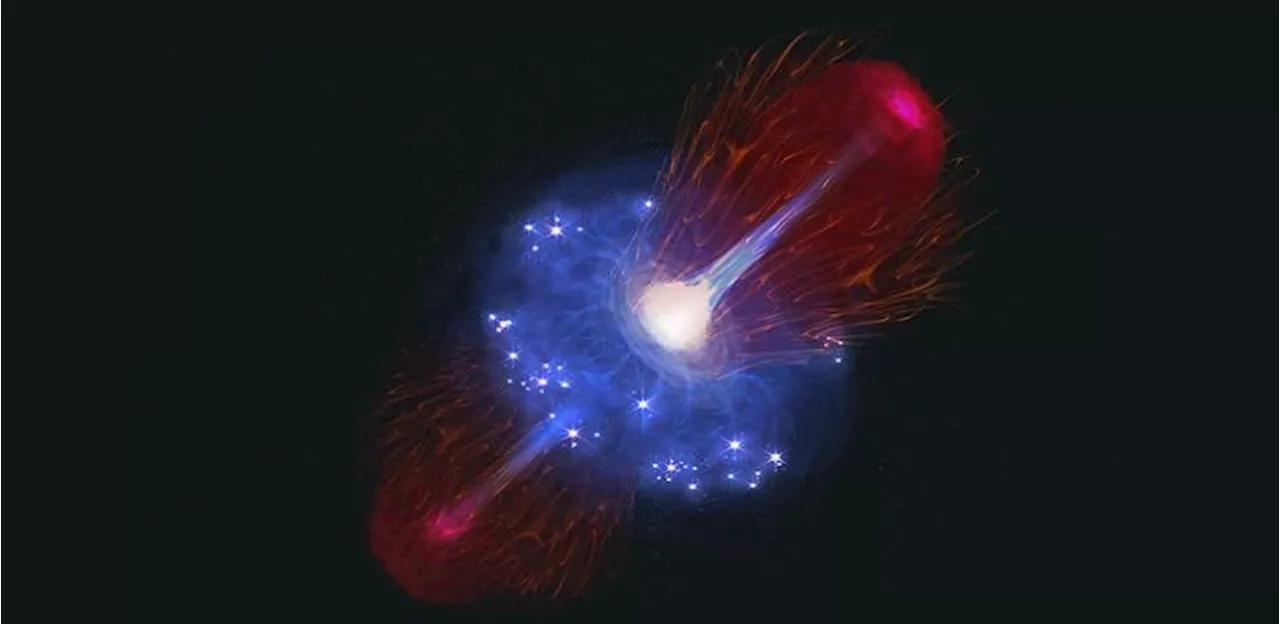Astronomers using the James Webb Space Telescope have discovered a supermassive black hole (SMBH) that is surprisingly dormant despite its immense size. This black hole, GN-1001830, is growing at an extremely slow rate compared to its mass, posing a puzzle for researchers trying to understand the growth of these colossal objects in the early Universe.
This artist’s impression shows a black hole about 800 million years after the Big Bang, during one of its short periods of rapid growth. Image Credit: Jiarong Gu In the last couple of decades, it’s become increasingly clear that massive galaxies like our own Milky Way host supermassive black holes (SMBHs) in their centres. How they became so massive and how they affect their surroundings are active questions in astronomy.
Astronomers working with the James Webb Space Telescope have discovered an SMBH in the early Universe that is accreting mass at a very low rate, even though the black hole is extremely massive compared to its host galaxy. What’s going on with this SMBH, and what does it tell astronomers about the growth of these gargantuan black holes? JWST Advanced Deep Extragalactic Survey ). It is one of the most massive SMBHs discovered by the JWST in the early Universe. While most present-day SMBHs account for about 0.1 % of the mass of their host galaxies, this one accounts for about 40% of its host galaxy’s mass. The puzzling thing is that GN-1001830 is consuming the gas it needs to grow at a very low rate and is basically dormant. Is it taking a break? Did it experience accelerated bursts of growth in the past? The lead author is Ignas Juodžbalis. Juodžbalis is a grad student at the Kavli Institute for Cosmology at the University of Cambridge.Ignas Juodžbalis, Kavli Institute for Cosmology, University of Cambridge The JWST has found many SMBHs already in place, only a few hundred million years after the Big Bang. Some of them are overmassive yet dormant, like GN-1001830. Researchers have developed multiple different models to explain them. This image shows the JWST Advanced Deep Extragalactic Survey (JADES) region of study. It’s in the same region as the Hubble’s Ultra Deep Field. Image Credit:‘ model, where primordial gas clouds directly collapsed into black holes that grew to become SMBH
SUPERMASSIVE BLACK HOLES JWST EARLY UNIVERSE BLACK HOLE GROWTH GALAXIES
United States Latest News, United States Headlines
Similar News:You can also read news stories similar to this one that we have collected from other news sources.
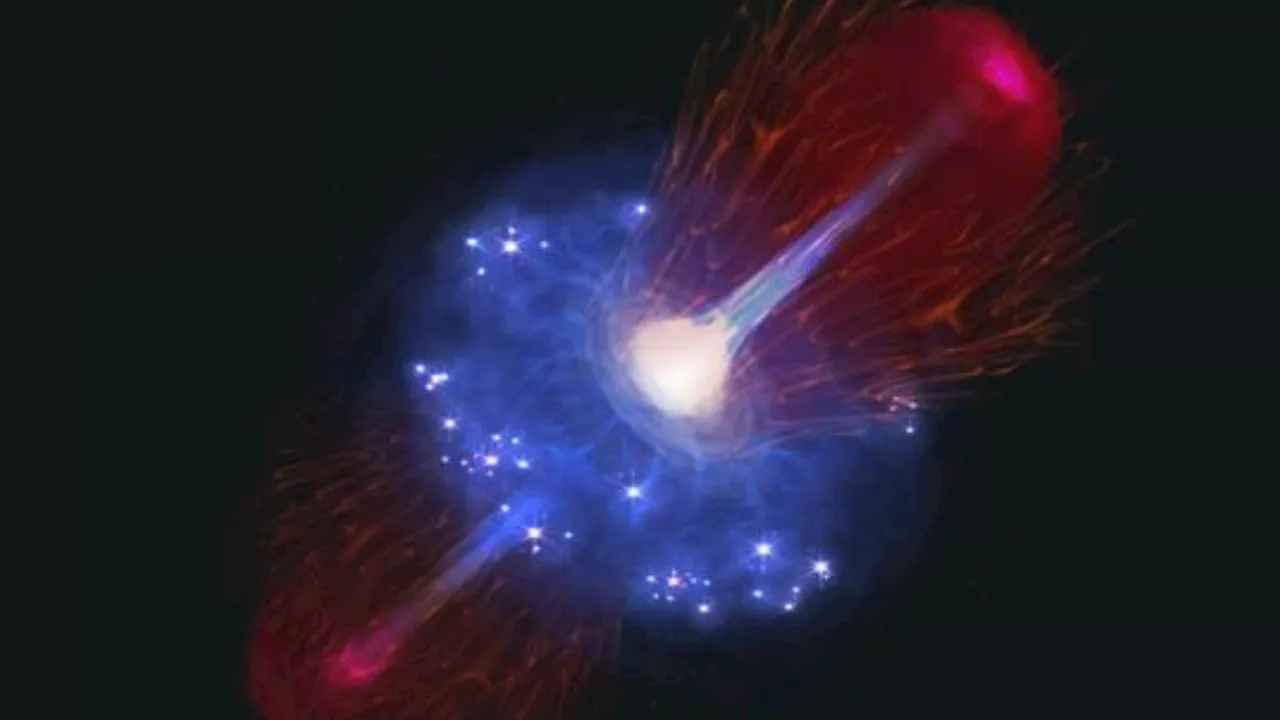 Dormant Supermassive Black Hole Found in Early UniverseScientists have discovered a dormant supermassive black hole in the early universe, which is surprisingly massive and visible despite not actively feeding.
Dormant Supermassive Black Hole Found in Early UniverseScientists have discovered a dormant supermassive black hole in the early universe, which is surprisingly massive and visible despite not actively feeding.
Read more »
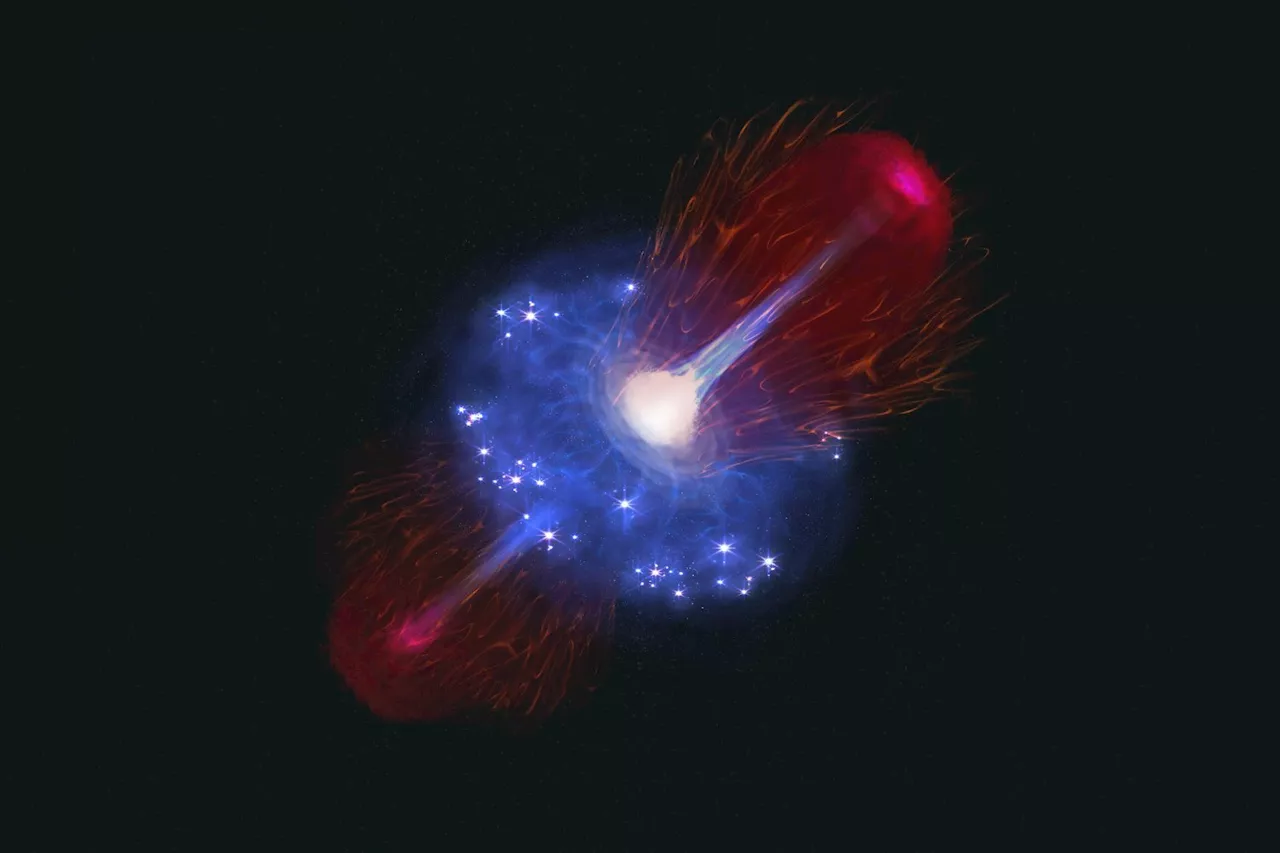 Dormant Black Hole in the Early Universe Baffles AstronomersThe James Webb Space Telescope has revealed a dormant black hole in the early universe, challenging conventional models of black hole growth.
Dormant Black Hole in the Early Universe Baffles AstronomersThe James Webb Space Telescope has revealed a dormant black hole in the early universe, challenging conventional models of black hole growth.
Read more »
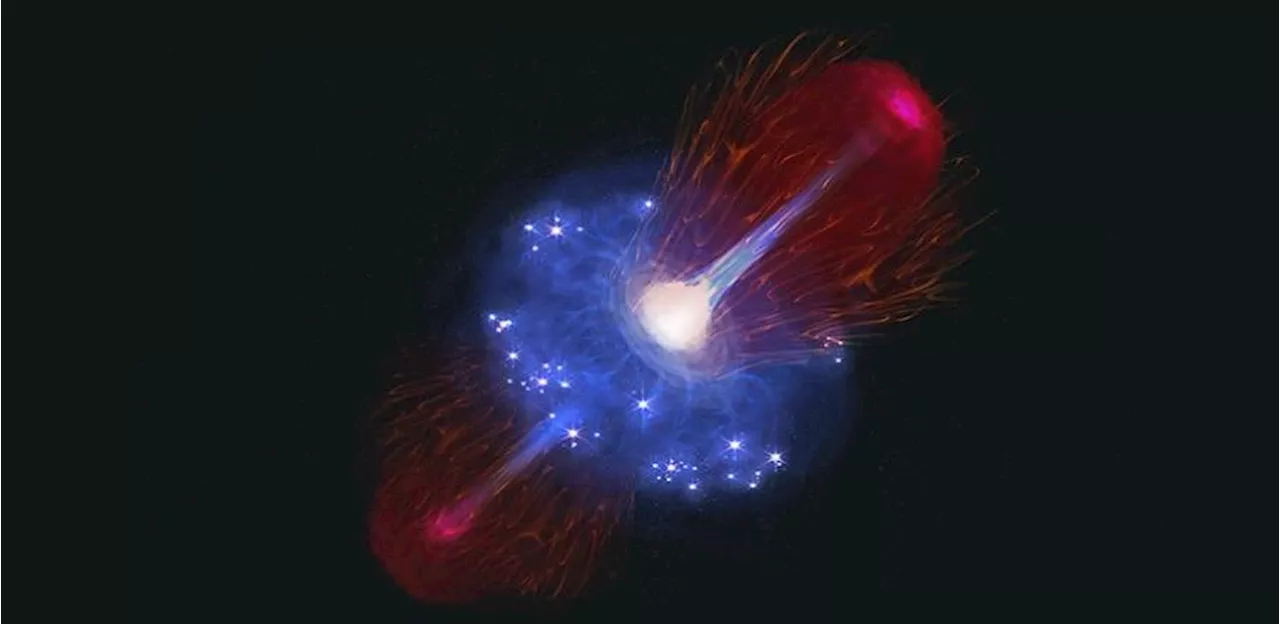 Massive Dormant Black Hole Baffles AstronomersAstronomers using the James Webb Space Telescope have discovered a supermassive black hole (SMBH) in the early Universe that is surprisingly dormant despite its massive size. GN-1001830, one of the most massive SMBHs discovered by JWST, accounts for 40% of its host galaxy's mass, yet it is consuming gas at a very low rate. This discovery raises questions about the growth and evolution of these gargantuan black holes.
Massive Dormant Black Hole Baffles AstronomersAstronomers using the James Webb Space Telescope have discovered a supermassive black hole (SMBH) in the early Universe that is surprisingly dormant despite its massive size. GN-1001830, one of the most massive SMBHs discovered by JWST, accounts for 40% of its host galaxy's mass, yet it is consuming gas at a very low rate. This discovery raises questions about the growth and evolution of these gargantuan black holes.
Read more »
 New Research may Explain how Supermassive Black Holes in the Early Universe Grew so FastSpace and astronomy news
New Research may Explain how Supermassive Black Holes in the Early Universe Grew so FastSpace and astronomy news
Read more »
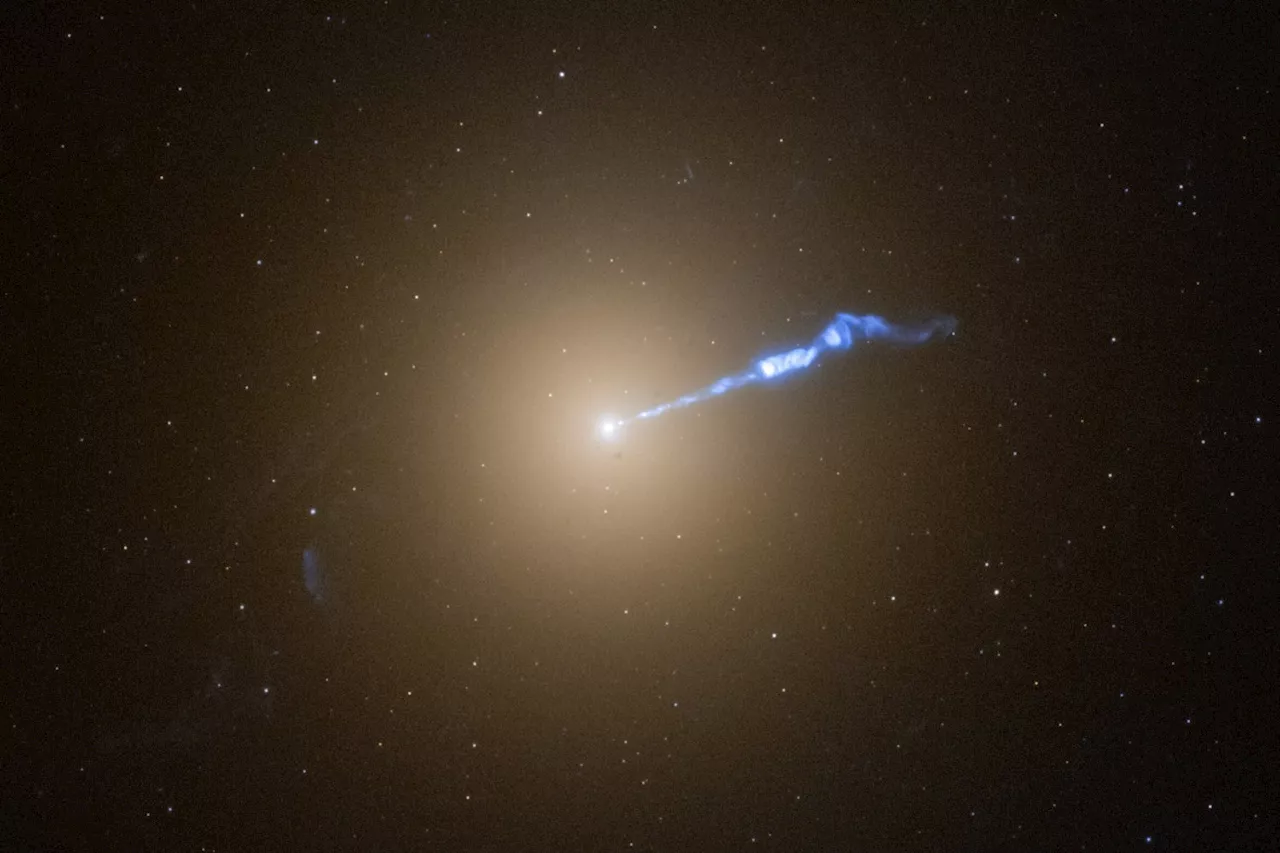 Gargantuan Gamma-Ray Flare Seen Spewing From Supermassive Black HoleM87 was the first black hole to be imaged, and now it's revealing details of how some elementary particles are accelerated by the universe's most extreme environments.
Gargantuan Gamma-Ray Flare Seen Spewing From Supermassive Black HoleM87 was the first black hole to be imaged, and now it's revealing details of how some elementary particles are accelerated by the universe's most extreme environments.
Read more »
 Astrophysicists capture astonishing images of gamma-ray flare from supermassive black hole M87The galaxy M87, located in the Virgo constellation, provided the first-ever photo of a black hole in 2019, when the Event Horizon Telescope captured an image of the supermassive black hole at the galaxy's center.
Astrophysicists capture astonishing images of gamma-ray flare from supermassive black hole M87The galaxy M87, located in the Virgo constellation, provided the first-ever photo of a black hole in 2019, when the Event Horizon Telescope captured an image of the supermassive black hole at the galaxy's center.
Read more »
